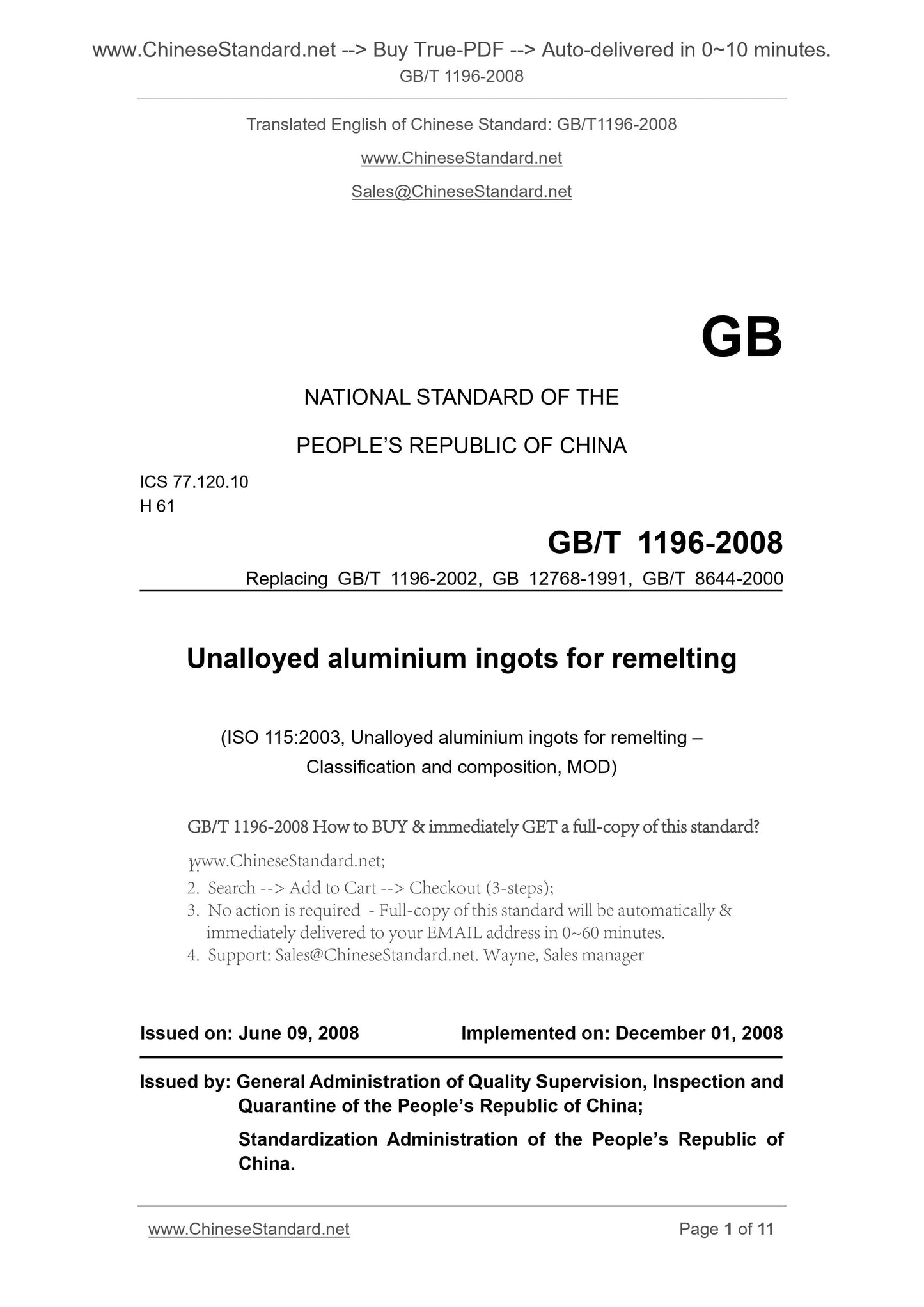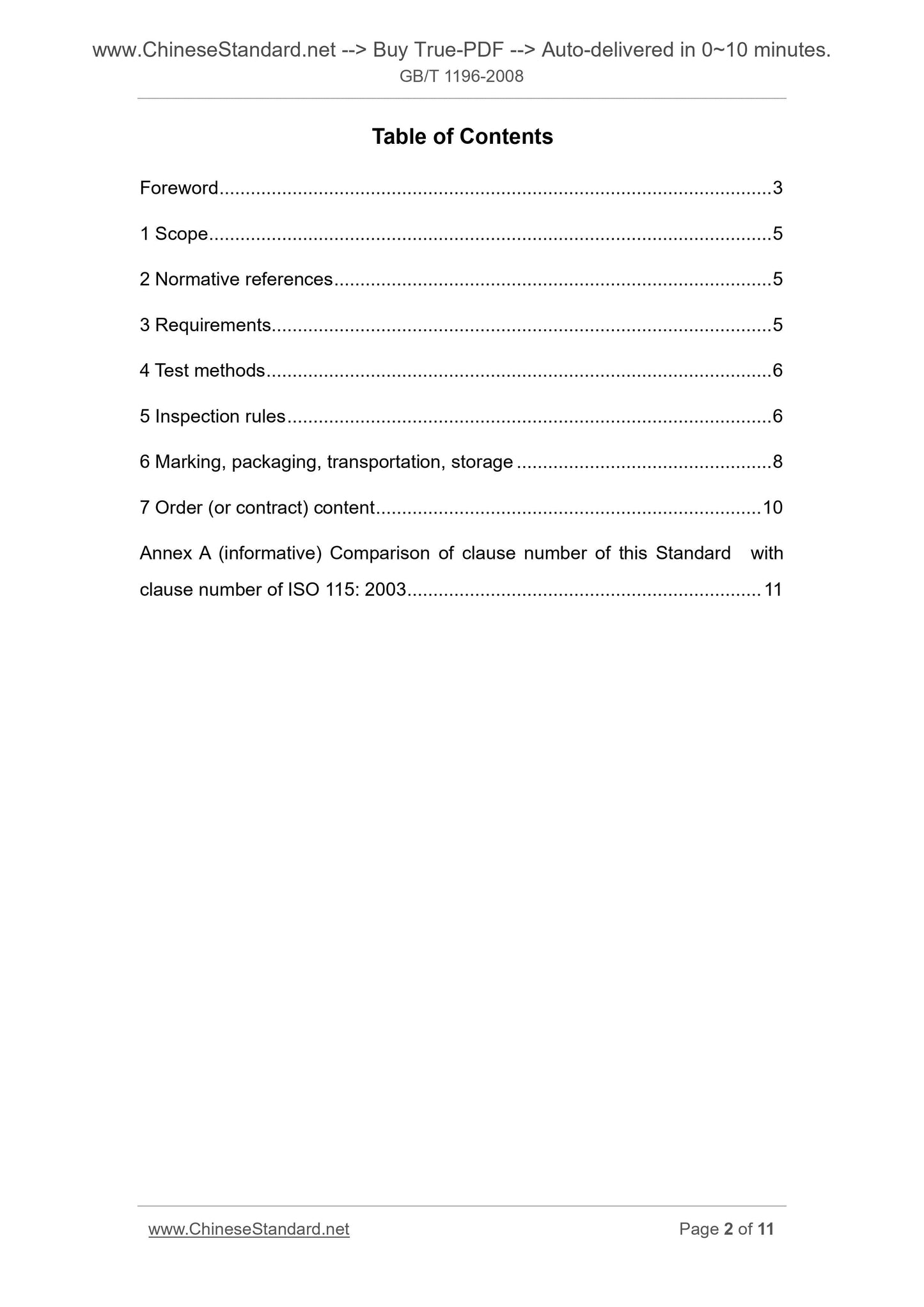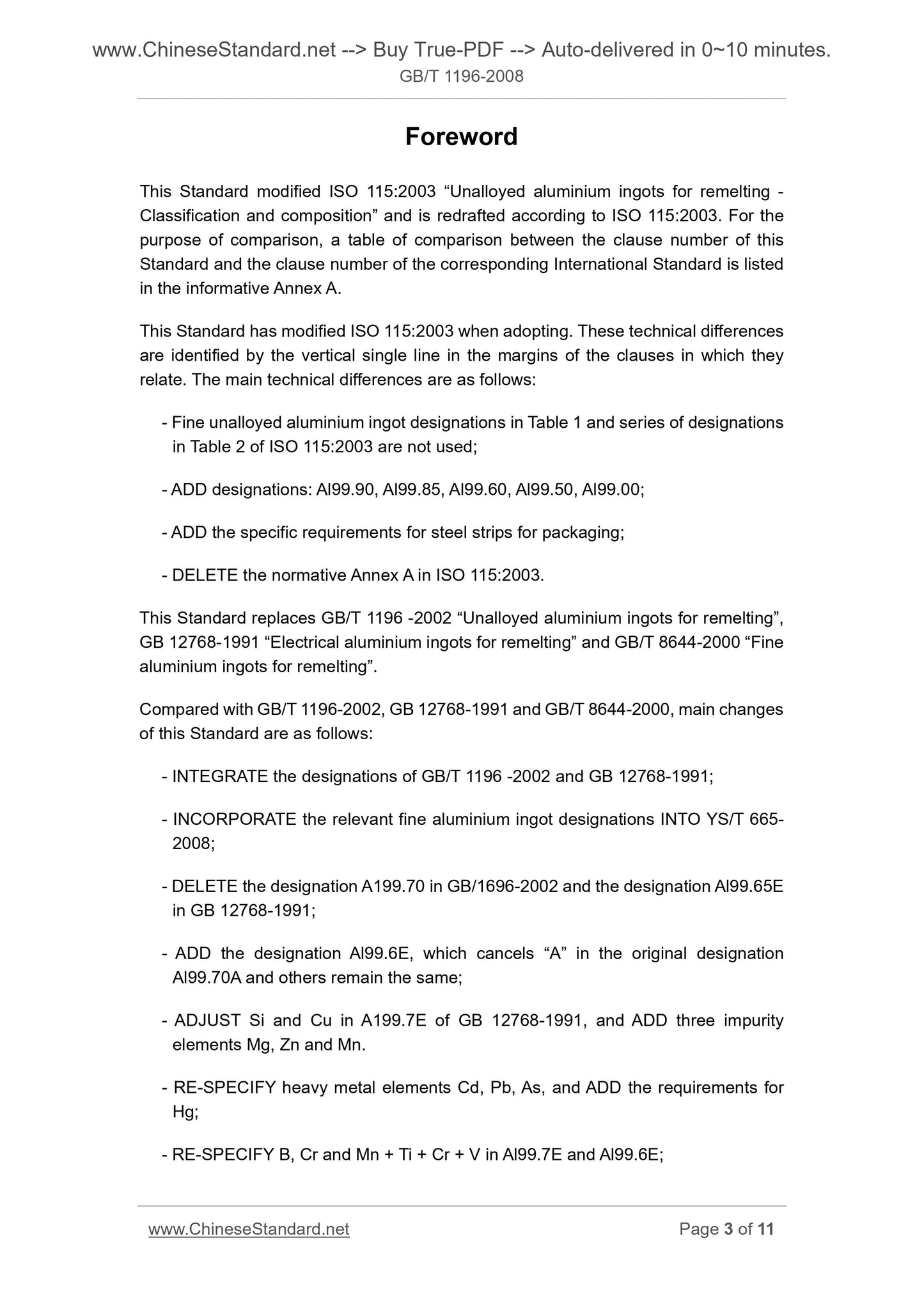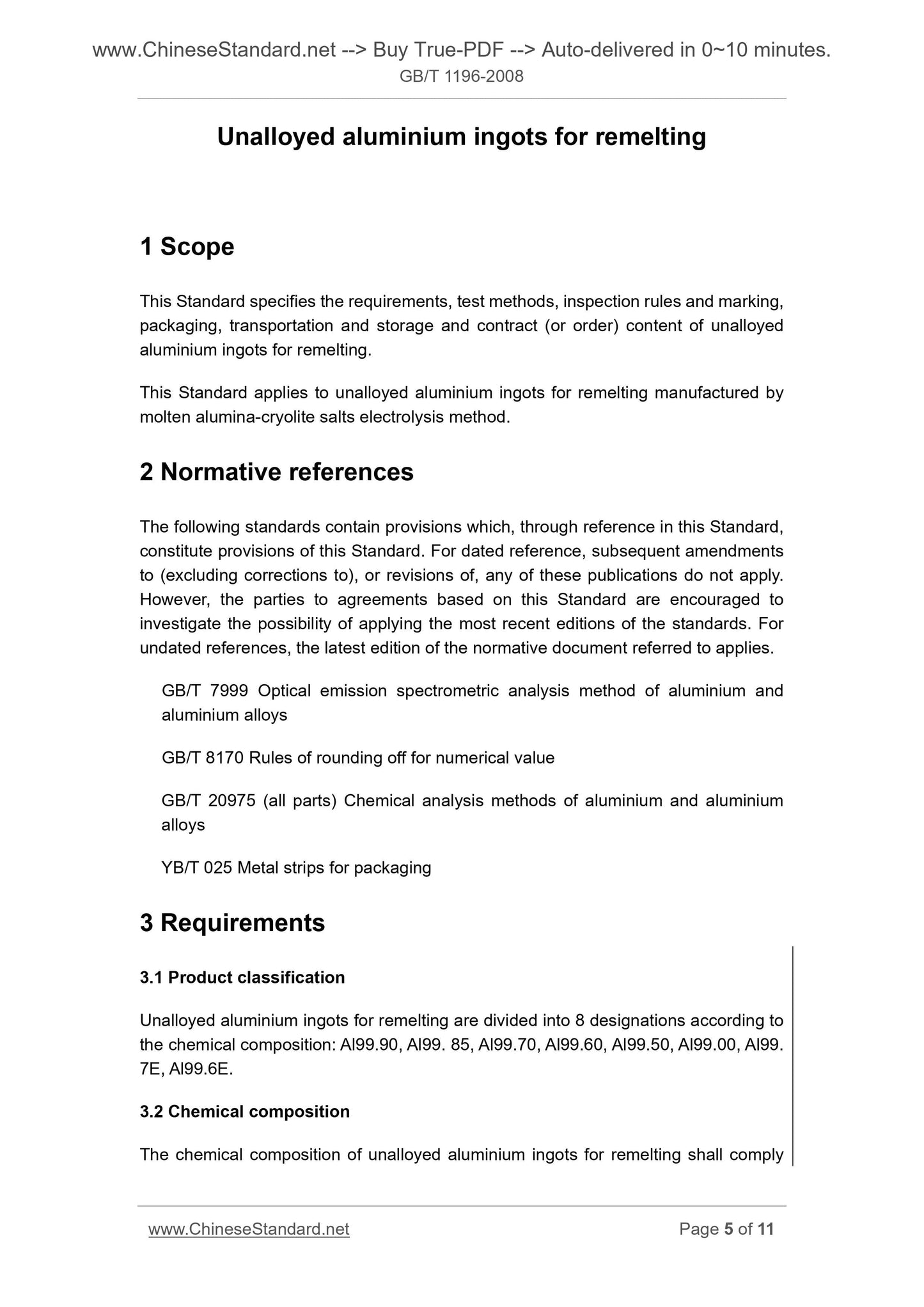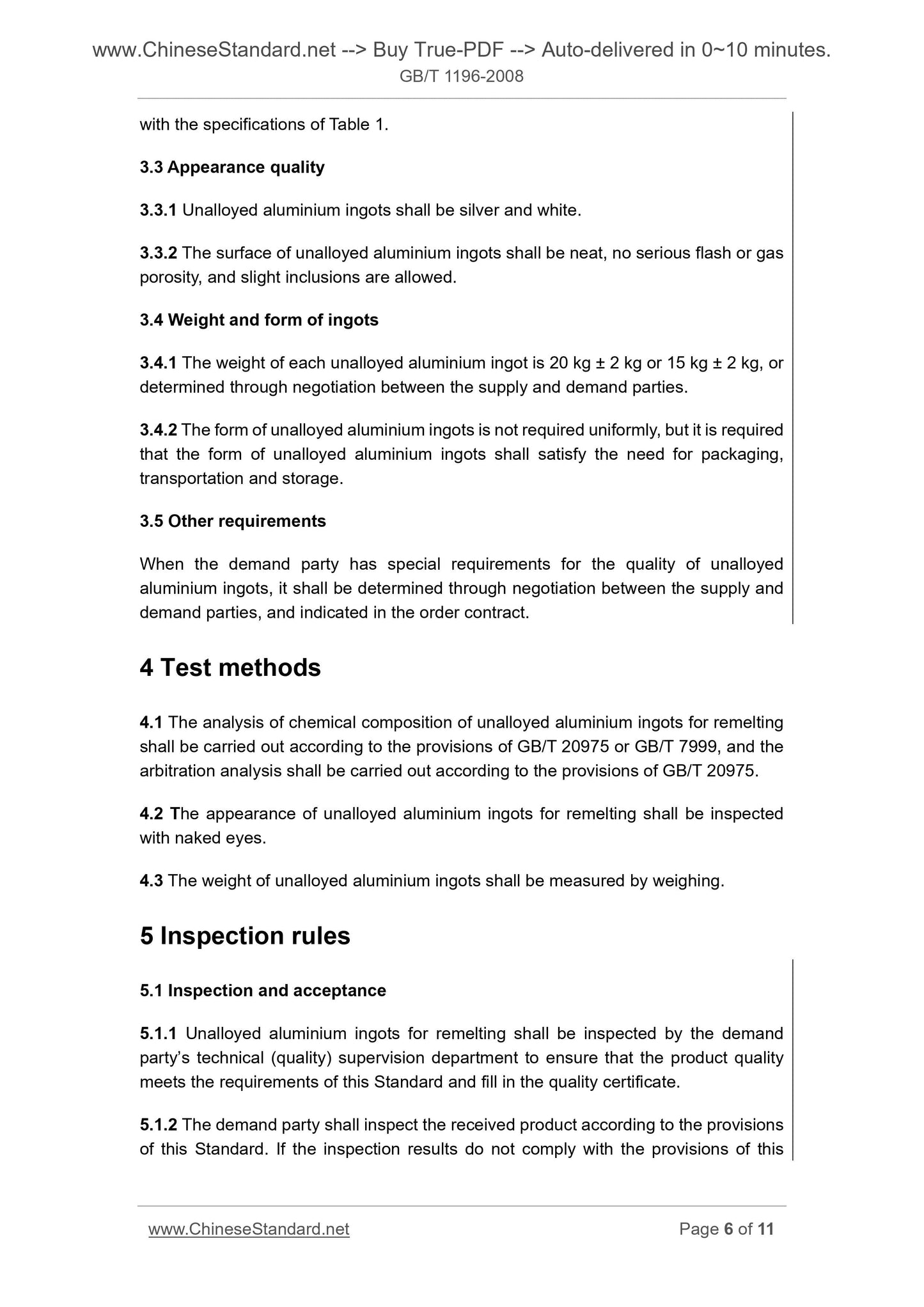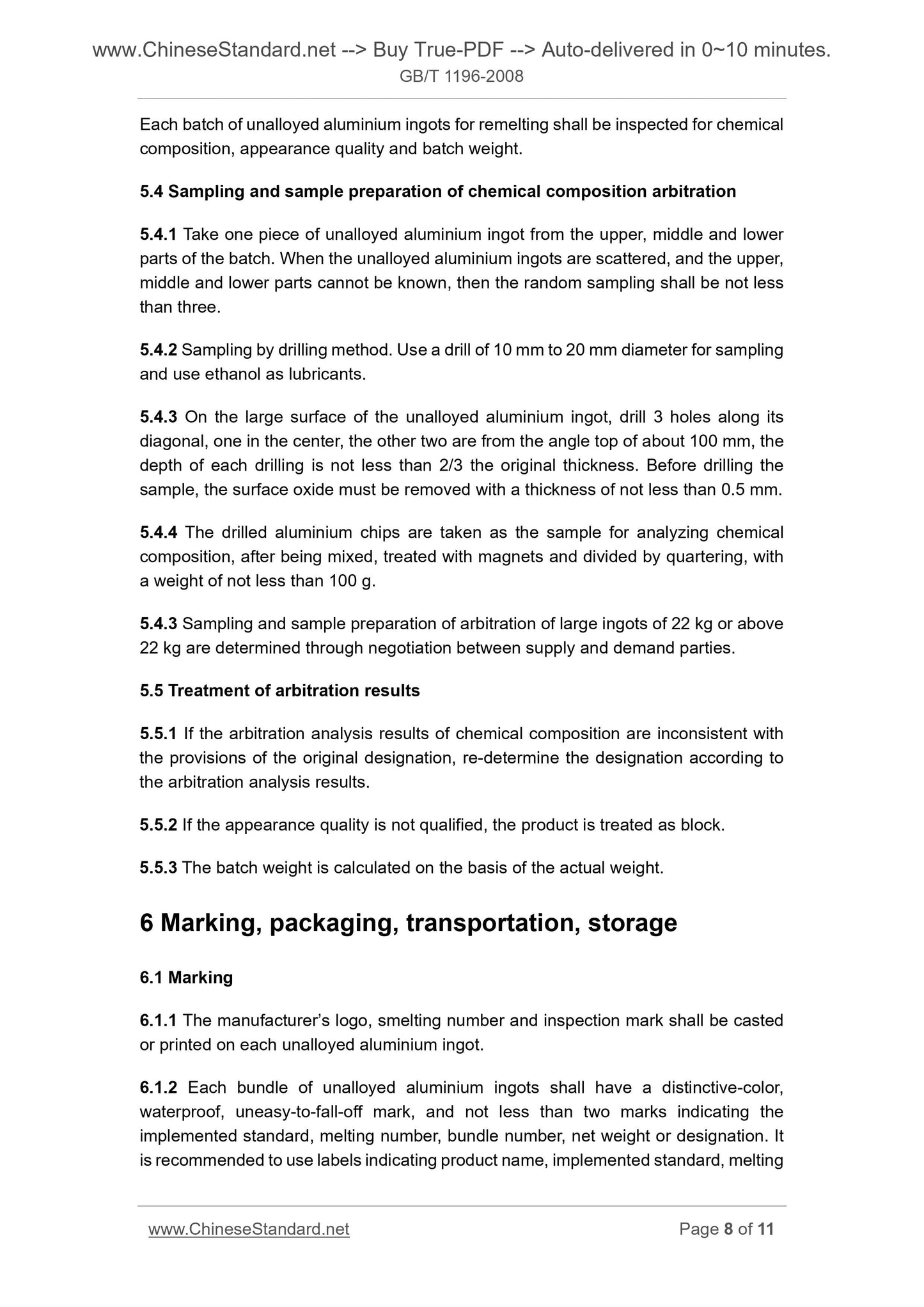1
/
of
6
PayPal, credit cards. Download editable-PDF and invoice in 1 second!
GB/T 1196-2008 English PDF (GB/T1196-2008)
GB/T 1196-2008 English PDF (GB/T1196-2008)
Regular price
$90.00
Regular price
Sale price
$90.00
Unit price
/
per
Shipping calculated at checkout.
Couldn't load pickup availability
GB/T 1196-2008: Unalloyed aluminium ingots for remelting
Delivery: 9 seconds. Download (and Email) true-PDF + Invoice.Get Quotation: Click GB/T 1196-2008 (Self-service in 1-minute)
Newer / historical versions: GB/T 1196-2008
Preview True-PDF
Scope
This Standard specifies the requirements, test methods, inspection rules and marking,packaging, transportation and storage and contract (or order) content of unalloyed
aluminium ingots for remelting.
This Standard applies to unalloyed aluminium ingots for remelting manufactured by
molten alumina-cryolite salts electrolysis method.
Basic Data
| Standard ID | GB/T 1196-2008 (GB/T1196-2008) |
| Description (Translated English) | Unalloyed aluminium ingots for remelting |
| Sector / Industry | National Standard (Recommended) |
| Classification of Chinese Standard | H61 |
| Classification of International Standard | 77.120.10 |
| Word Count Estimation | 7,73 |
| Date of Issue | 2008-06-09 |
| Date of Implementation | 2008-12-01 |
| Older Standard (superseded by this standard) | GB/T 1196-2002; GB/T 8644-2000; GB 12768-1991 |
| Quoted Standard | GB/T 7999; GB/T 8170; GB/T 20975; YB/T 025 |
| Adopted Standard | ISO 115-2003, MOD |
| Regulation (derived from) | National Standard Approval Announcement 2008 No.9 (Total No.122) |
| Issuing agency(ies) | General Administration of Quality Supervision, Inspection and Quarantine of the People's Republic of China, Standardization Administration of the People's Republic of China |
| Summary | This standard specifies the requirements for remelting ingots, transportation and storage and content of the contract, test methods, inspection rules and signs, packaging. This standard applies to aluminum-cryolite molten salt electrolysis method produces aluminum ingots for remelting. |
Share
